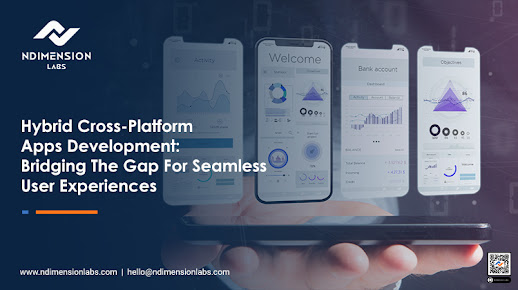How to Successfully Develop and Market your E-commerce Marketplace Website and Mobile App – The Ultimate Guide: -
What is an E-commerce Marketplace?
An e-commerce marketplace is an
online platform that allows multiple sellers to list and sell their products to
a large audience of buyers. These marketplaces typically provide a wide variety
of products and services, and they often offer features such as user profiles,
product listings, reviews, and payment processing. Some of the most popular
e-commerce marketplaces include Amazon, eBay, Etsy, and Alibaba.
E-commerce
marketplaces have become increasingly popular in recent years due to the
convenience and ease of use they provide for both buyers and sellers. For
buyers, e-commerce marketplaces offer a one-stop-shop for a wide variety of
products and services, making it easy to find what they're looking for. For
sellers, e-commerce marketplaces provide a platform to reach a large audience
of potential buyers, without the need for them to create and maintain their own
online store.
The marketplace model has
different variations in terms of fees, control of the sellers and its inventory
but the basic feature is that they connect buyers and sellers in one platform.
Marketplaces can be categorized
into different types based on their business model and target audience:
C2C (consumer-to-consumer) Marketplaces:
These marketplaces connect buyers and sellers directly, and
they're typically used for buying and selling used goods, such as cars,
furniture, and electronics.
B2C (business-to-consumer) Marketplaces: These marketplaces connect businesses
with consumers, and they're typically used for buying and selling new goods,
such as clothing, electronics, and home goods.
B2B (business-to-business) Marketplaces:
These marketplaces connect businesses with other businesses, and they're
typically used for buying and selling wholesale goods, such as raw materials
and industrial equipment.
Overall, e-commerce marketplaces provide a cost-effective and convenient way for buyers and sellers to connect and conduct transactions online.
How to Develop an E-commerce Marketplace Website and Mobile App
Developing an e-commerce marketplace
website and app can be a complex and time-consuming process. Here are the
general steps you can follow to develop your own e-commerce marketplace:-
1. Define
your target audience and business model: Before you start building your
e-commerce marketplace, it's important to have a clear understanding of your
target audience and the business model you want to follow. This will help you
determine the features and functionality you need to include in your platform.
2. Choose
a platform: There are a number of platforms available for building an
e-commerce marketplace, such as Magento, WooCommerce, and Shopify. Each
platform has its own set of features and capabilities, so it's important to
choose one that meets your specific needs.
3. Design
and develop your website and app: After you've chosen your platform, you'll
need to design and develop your website and app. This will involve creating
wireframes, mock-ups, and prototypes to define the overall look and feel of
your platform. You'll also need to decide on the features and functionality you
want to include, such as product listings, user profiles, and payment
processing.
4. Test
and debug your website and app: Before launching your e-commerce marketplace,
it's important to thoroughly test and debug your website and app to ensure that
everything is working properly. This will involve running a series of tests to
identify any issues and fixing them before your platform goes live.
5. Launch
and promote your platform: Once your e-commerce marketplace is ready to go
live, you'll need to launch it and start promoting it to your target audience.
This will involve creating a marketing plan and using a variety of tactics to
drive traffic and generate sales.
Overall, developing an e-commerce
marketplace can be a complex and time-consuming process, but with careful
planning and execution, it can be a rewarding and successful venture.
How to Market your E-commerce Marketplace
Website and Mobile App?
Marketing your e-commerce
marketplace website and app is an important step in building and growing your
business. Here are some strategies you can use to market your e-commerce
marketplace:
SEO: Optimize your website and app for search engines by
incorporating keywords and meta tags into your content, and building backlinks
to your site. This will help your e-commerce marketplace show up in search
engine results, which will make it easier for potential buyers to find you.
Social Media: Use social media platforms to promote your e-commerce
marketplace and connect with potential buyers. This can include creating social
media profiles for your business, creating and sharing content, and running
social media ads.
Influencer Marketing: Partner with influencers in your niche to
help promote your e-commerce marketplace. Influencers can help reach a large
audience and promote your products or services to their followers.
Email Marketing: Create an email marketing campaign to stay in
touch with existing and potential customers. This can include sending out
newsletters, promotional emails, and special offers.
Paid Advertising: Utilize different types of paid advertising such
as Google AdWords, Facebook ads, or Instagram Ads. This can drive traffic to
your website and increase brand awareness.
Content Marketing: Creating valuable and relevant content that is
interesting to your target audience. This can include blog posts, videos,
images, and infographics that educate and inform customers.
Referral Programs: Encourage existing customers to refer friends
and family to your e-commerce marketplace by offering referral bonuses or
discounts.
Participate in Online Communities: Join online communities related
to your niche and share your expertise, as well as your products. This can help
to build trust and credibility with potential buyers.
Remember that marketing is an
ongoing process; you may need to experiment with different strategies and
channels to find the ones that work best for your e-commerce marketplace.
Consistency in your messaging, targeting the right audience and testing are
important to be effective.




Comments
Post a Comment